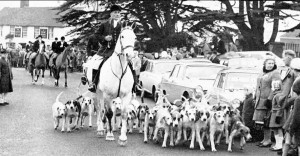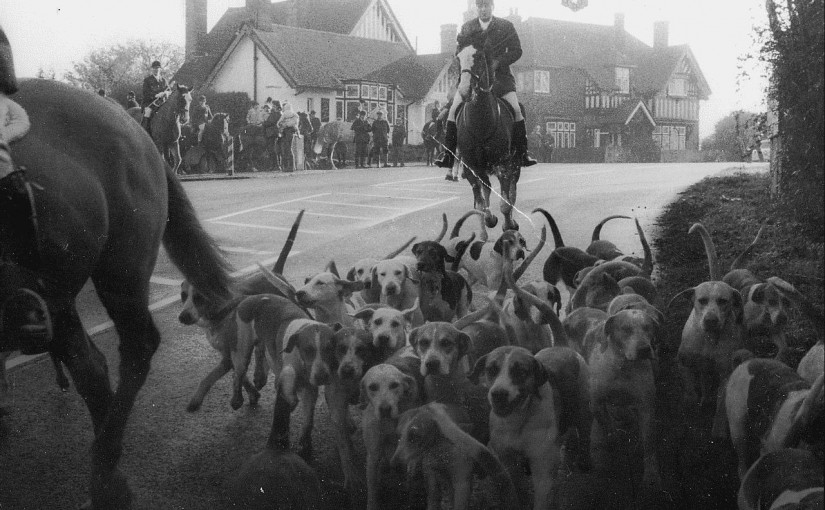Up to 1966 the Romney Marsh Hunt was an often seen spectacle in and around Rye. The traditional Boxing Day Hunt usually set off from a well known Rye Hostelry, The George Hotel, the Peace & Plenty and The King’s Head (now known as the ‘Top O’ The Hill’)
The Romney Marsh became a recognised pack of Foxhounds in 1956, having been founded as Harriers in 1858. The East Sussex dates from 1853. The Hunt organised annual Point to Point Race meetings, often at Lamb Farm East Guildeford, where John Hacking was a local favourite, wearing his own claret and blue colours he was often seen in the winning enclosure. His son John also carried on with winning ways.

The Romney Marshes is the ideal place to hunt the fox. It was a way that local farmers and horsemen had enjoyed the thrill of the chase and minimised the risk of Romney Marsh lambs being slaughtered by an over populated area of foxes. Since the passing of the Hunting Act in 2004, which forbids the hunting of foxes with dogs, the fox population has increased and spilled over into towns and cities. The last legal foxhunt was held on 17 February 2005 but the hunt adapted by by trailing scents that the dogs will follow but are determined to see the Act overturned and return to traditional ways of keeping the fox population in check.
The earliest known attempt to hunt a fox with hounds was in Norfolk in 1534, when farmers began chasing foxes with their dogs for the purpose of pest control. The first use of packs specifically trained to hunt foxes was in the late 1600s, with the oldest fox hunt being, probably, the Bilsdale in Yorkshire.
With the onset of the Industrial Revolution, people began to move out of the country and into towns and cities to find work. Roads, rail, and canals split hunting countries, but also made hunting accessible to more people. Fox hunting developed further in the eighteenth century when Hugo Meynell developed breeds of hound and horse to address the new geography of rural England.
The Romney Marsh Hunt was amalgamated with the East Sussex in 1966, becoming the East Sussex and Romney Marsh Hunt.
Before and since that time hunting has had to cope with many new developments as the railways divided up the country, farmers embraced wire fences in preference to hedges, towns and cities grew into the countryside and motorways were built across the land. Hunts, however, have always adapted and survived and carried on in to the 21st century in a form that would have been entirely recognisable to Hugo Meynell and the pioneers of modern foxhunting. From Kent to Cumbria, and from Cornwall to Norfolk, foxhunting has remained a valued part of rural life even after the passing of the Hunting Act in 2004.
